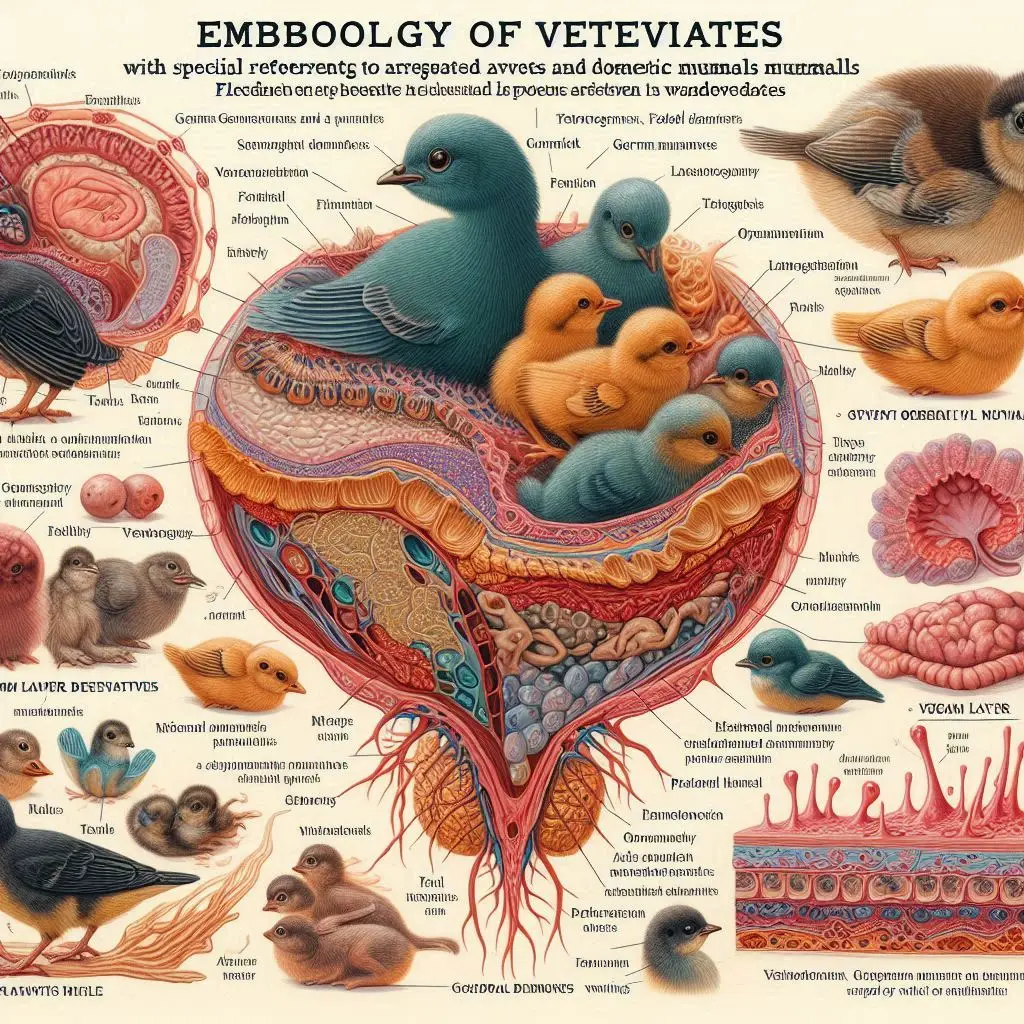Placentation in Animals

What is Placentation?
Placentation refers to the formation and structure of the placenta during pregnancy. The placenta is an organ that develops in the uterus and connects the developing fetus to the mother. It allows for the exchange of nutrients, gases, and waste products, ensuring that the fetus receives the necessary resources for growth and development. The placenta also plays a role in hormone production, immune protection, and metabolic functions.
Importance of the Placenta
The placenta is essential for several reasons:
- Nutrient Transfer: It facilitates the transfer of oxygen and nutrients from the mother to the fetus while removing waste products from fetal circulation.
- Hormonal Regulation: The placenta produces hormones that help maintain pregnancy, support fetal development, and prepare the mother’s body for childbirth.
- Immune Protection: It acts as a barrier to protect the fetus from pathogens while allowing the transfer of maternal antibodies.
Types of Placentation
Placentation varies significantly among different species of animals. The main types of placentation are categorized based on the structure and function of the placenta. Here are the primary types:
1. Epitheliochorial Placenta
In this type, the placenta consists of six tissue layers: maternal epithelium, connective tissue, and endothelium, along with fetal chorion, connective tissue, and endothelium. This structure is found in pigs and horses. The maternal tissue remains intact, providing a barrier that protects the fetus from maternal immune responses.
2. Syndesmochorial Placenta
Syndesmochorial placentation occurs when the maternal epithelium is absent, but the connective tissue is present. This type is seen in some ruminants, such as sheep. The placenta allows for a closer interaction between maternal and fetal tissues, facilitating nutrient exchange.
3. Endotheliochorial Placenta
In this type, the maternal endothelium is in direct contact with the chorion. This arrangement is found in carnivores, such as dogs and cats. The reduced number of tissue layers enhances the efficiency of nutrient and gas exchange.
4. Hemochorial Placenta
The hemochorial placenta is characterized by direct contact between maternal blood and fetal chorion. This type is observed in primates, rodents, and some bats. The placenta is highly efficient in nutrient transfer, but it also poses risks of maternal-fetal blood mixing, which can lead to complications.
5. Discoidal Placenta
In discoidal placentation, the placenta forms a disc-shaped structure that attaches to a specific area of the uterine wall. This type is common in humans and other primates. The disc shape allows for a large surface area for nutrient exchange, supporting the demands of a growing fetus.
6. Cotyledonary Placenta
This type is found in ruminants, where the placenta forms localized regions called caruncles that connect to the fetal cotyledons. This structure allows for efficient nutrient transfer and is adapted to the needs of the developing fetus in these species.
Evolutionary Significance of Placentation
The evolution of placentation is a fascinating area of study. Different types of placentation have evolved in response to various environmental pressures and reproductive strategies. For example, the hemochorial placenta allows for efficient nutrient transfer, which is crucial for species with high metabolic demands, such as primates.
Kin Selection and Placentation
Recent research suggests that kin selection may play a role in placentation. The arrangement of the placenta can influence interactions among developing fetuses, impacting their growth and survival. Understanding these dynamics can shed light on how species adapt their reproductive strategies in different environments.
Implications for Fetal Development
The type of placentation can significantly affect fetal development. For instance, species with hemochorial placentation may have more rapid fetal growth due to the efficient nutrient transfer. Conversely, species with epitheliochorial placentation may experience slower growth rates, as the placenta acts as a more substantial barrier.
Maternal Health and Placenta
The health of the placenta is crucial for both maternal and fetal well-being. Complications during placentation can lead to adverse outcomes, such as preeclampsia, gestational diabetes, and placental abruption. Understanding the mechanisms of placentation can help in developing interventions to improve maternal and fetal health.
Conclusion
Placentation is a vital aspect of animal reproduction that varies widely among species. The different types of placentation—epitheliochorial, syndesmochorial, endotheliochorial, hemochorial, discoidal, and cotyledonary—each play unique roles in fetal development and maternal health. Studying placentation not only enhances our understanding of reproductive biology but also has significant implications for improving outcomes in pregnancy and childbirth.
For more pearls of Vets Wisdom:
https://wiseias.com/partitioning-of-food-energy-within-animals/






Responses